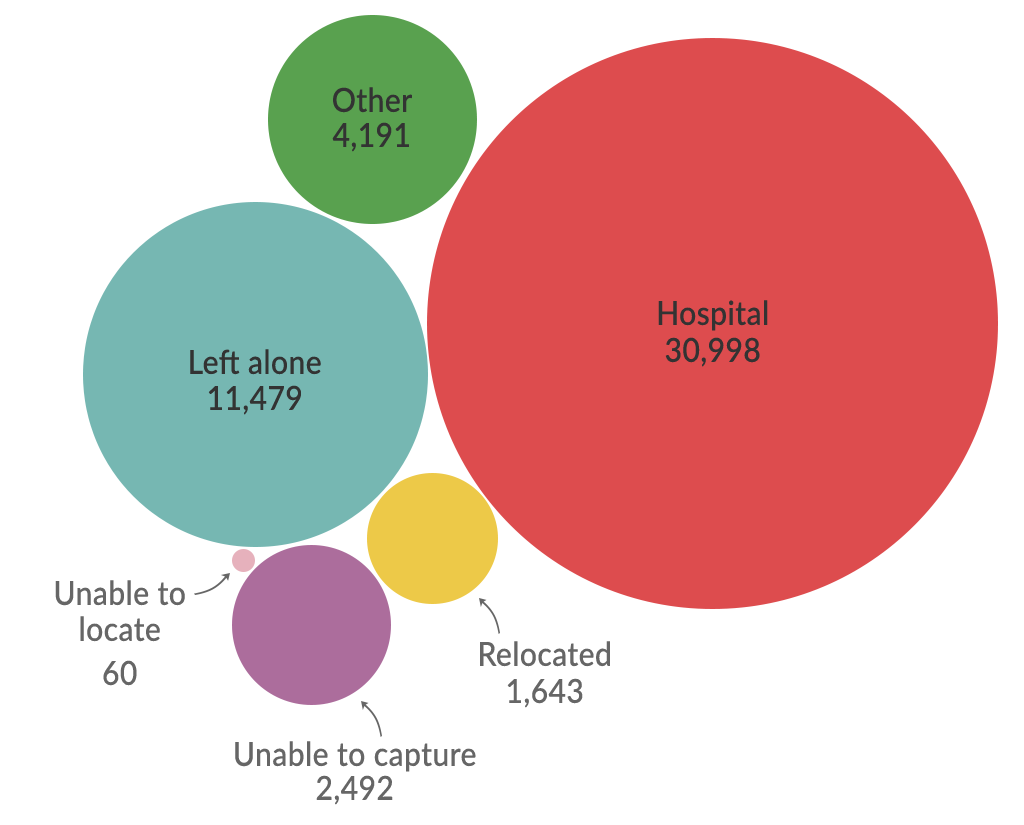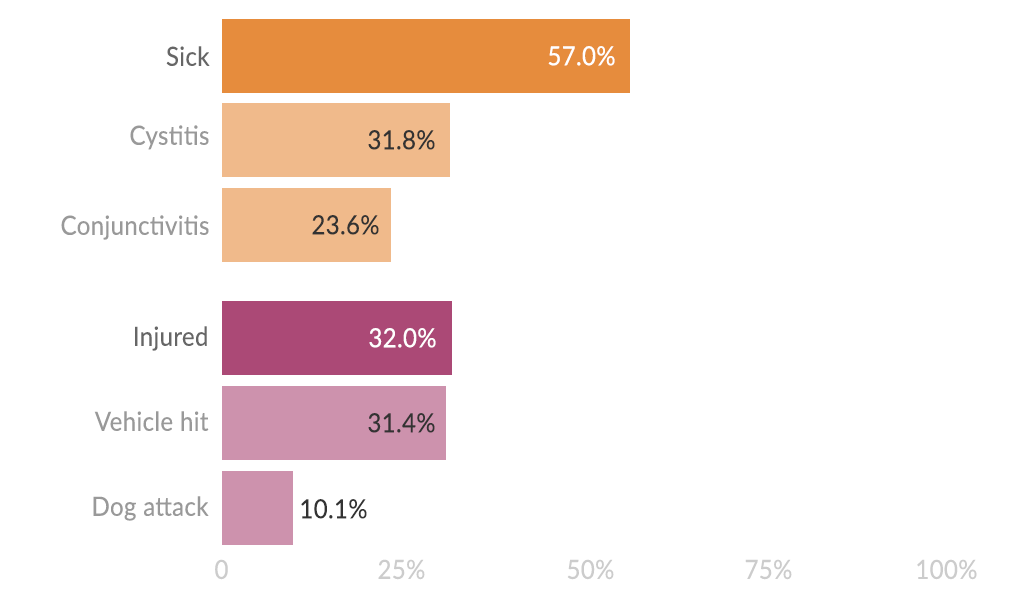Declining koala populations in Queensland
Koala populations in South East Queensland (SEQ) have experienced a major decline. It’s estimated that numbers have decreased by as much as over the past 20 years, and koalas are listed as vulnerable in the state.
Queensland’s Department of Environment and Science maintains a koala hospital database known as , which was developed as part of a research at the University of Queensland to help study the causes of koala disease, injury and death in the region.
A summary of the is available via the Queensland Open Data . The data includes the location, gender, maturity level and health status of the koala at the time of initial assessment. The collected data also includes information such as whether a young koala was present, what happened to the koala (e.g. whether it was taken to a koala hospital or left alone), and what the ultimate outcome was for the koala.
Many koalas end up in hospitals
The current data, released in November 2020, contains koala incidents from July 1996 to December 2019. The data includes 50,874 individual cases (though a small number of duplicate records may exist), and shows that almost 31,000 adult koalas were taken to hospital during this time.
The fate of adult koalas after contact with people

The yearly breakdown of the data shows 2019 had the highest number of koala hospitalisations on record — 1,710 adults, an increase of about 44% from 2018.
The fate of adult koalas after human contact, by year

The overall number of cases has reduced from the high rates between 2009 and 2012, but this change is largely due to the disappearance of incidents classed as “unable to capture” or “left alone” over the past five or six years. The reasons for this change are not clear from the data alone — it could be due to changes in recording methodology or scope of data collection. (And it would be advisable to consult the researchers to better understand the context of the data.)
Common threats to our koala population
Of the koalas admitted to hospitals, about 57% were classified as being sick. In terms of disease, chlamydia is very common in koalas, and a 2012 study estimated that about 50% of South East Queensland were infected. About 27% of the hospitalised koalas had cystitis (a urinary tract infection from chlamydia) and about 23% had conjunctivitis (another common symptom of chlamydia).
Common conditions of adult koalas admitted to hospitals

Most koalas in Queensland are found in South East Queensland, which also happens to have a high concentration of people … and cars. In terms of injuries, vehicle accidents were a common threat, with 8,251 (or about 31%) of hospitalised koalas being hit by some type of vehicle. Dog attacks made up about 10% of incidents resulting in hospitalisation in 2019.
It's important to note that these threats are not mutually exclusive. It is possible a koala involved in a car accident may also suffer from chlamydia.
Spring is a dangerous time for koalas
Analysing frequency of incidents by month reveals a clear pattern: more koalas are taken to hospital from July to November than during other months.
Number of adult koalas taken to hospital, per month

Spring is the mating season for koalas. While koalas are not social animals and are quite territorial, male koalas will move around to find a mate. Males will also fight off rival males. The increase in the number of hospitalisations in spring could be attributed to the increased movement of koalas during this time.
This has been only a shallow look at this rich dataset, and there is much more that can be done. As always, we recommend consulting the researchers or data custodians to understand the nuances of the data and know the limitations of the conclusions that can be drawn.
And if you have analysed this dataset (or a related dataset), we’d love to hear from you! Get in touch via Twitter (@salsadigital) or the .
The Koala Hospital data is extracted from the KoalaBASE database maintained by the Department of Environment and Science, Queensland, and made available via the Open Data .
See any errors or issues? Please let us know.


